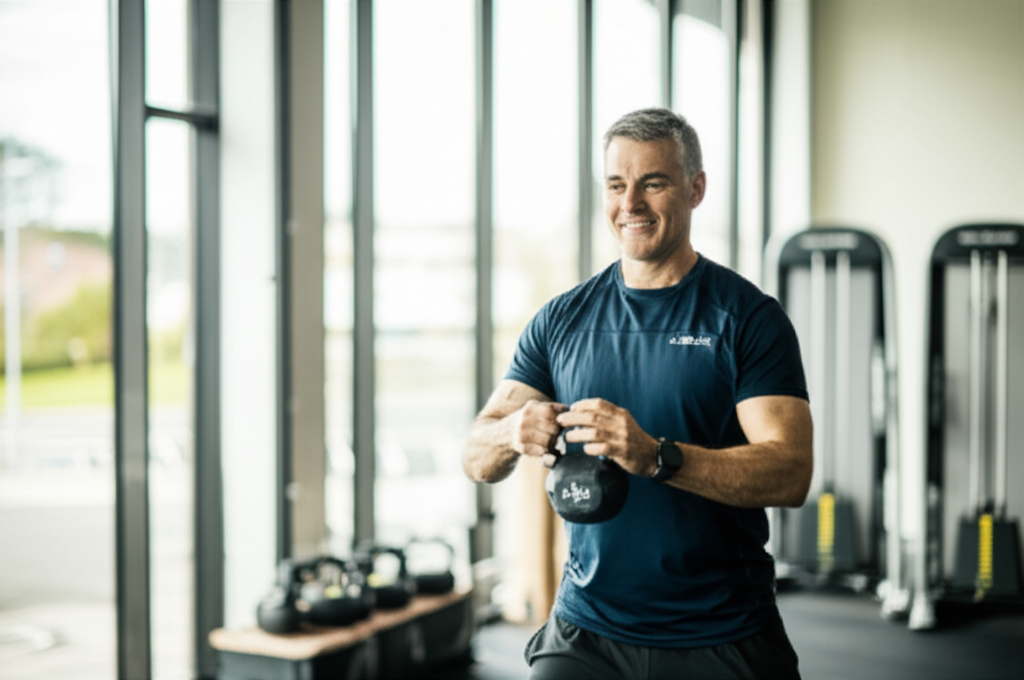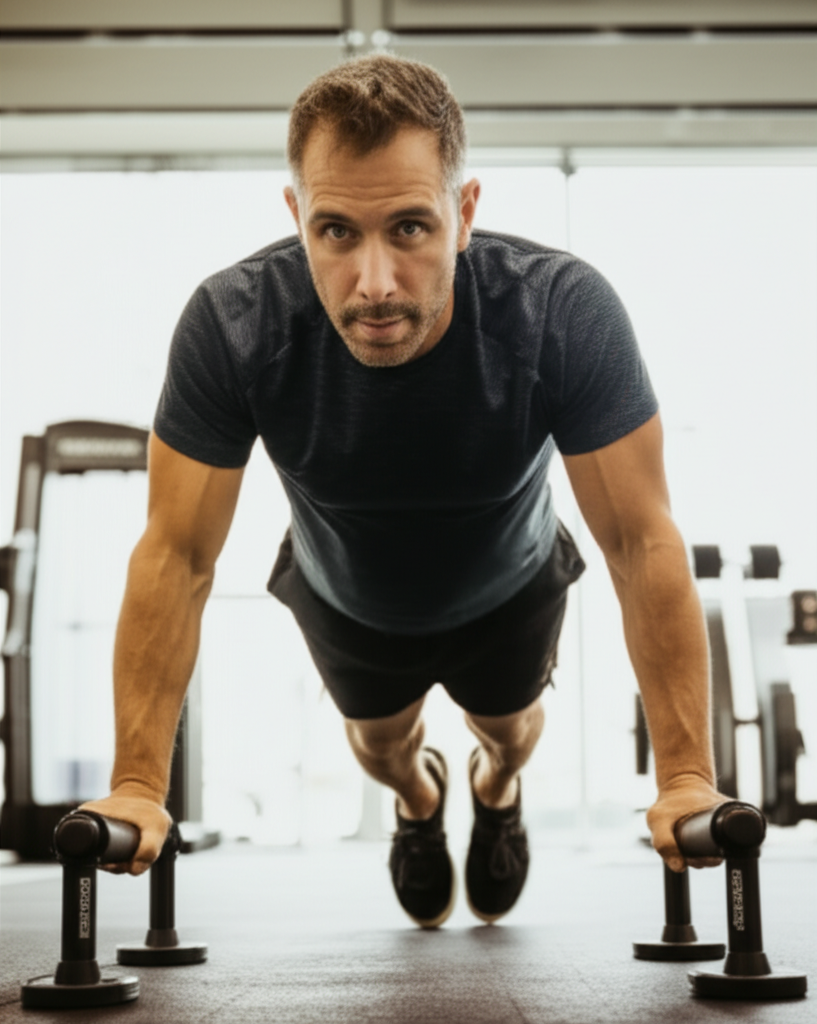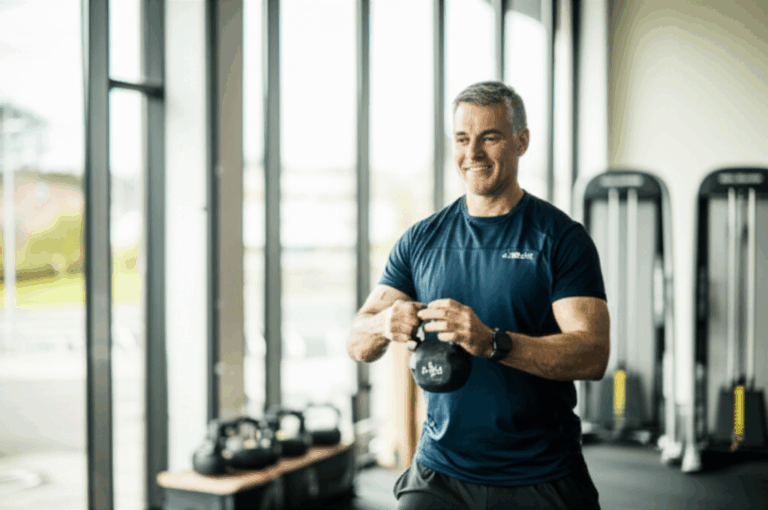As the decades accumulate, the pursuit of fitness often shifts from chasing peak performance to fostering sustainable well-being and, crucially, finding joy in the movement itself. For many fitness professionals, this evolution is a personal journey, exemplified by trainers like Ed Gemdjian, who, since turning 40, has meticulously crafted a weekly workout routine centered on health, adaptability, and pure enjoyment. His approach offers valuable insights for anyone looking to maintain vitality and a positive relationship with exercise in their middle years and beyond.

The Evolving Landscape of Fitness After 40
The physical demands and recovery capabilities of the body change significantly after the age of 40. Issues like joint health, muscle mass preservation, and fluctuating energy levels become more prominent. Rather than resisting these changes, a smart, sustainable fitness routine embraces them by prioritizing different aspects of training. Trainers often emphasize that consistency, proper form, and listening to one’s body are paramount to avoiding injury and ensuring long-term engagement.
Key considerations for fitness after 40 include:
- Prioritizing Strength Training: To combat the natural decline of muscle mass (sarcopenia), strength training becomes non-negotiable. This helps maintain metabolism, bone density, and overall functional strength.
- Incorporating Low-Impact Cardio: While crucial for heart health, cardio doesn’t always need to be high-intensity. Low-impact options like walking, cycling, or swimming are gentler on joints.
- Focusing on Mobility and Flexibility: Essential for improved movement efficiency and injury prevention, activities like yoga, Pilates, or dynamic stretching are highly beneficial.
- Making Recovery a Priority: Adequate sleep, hydration, and scheduled rest days are where the body repairs and grows stronger. Over-training can lead to burnout and injury.
- Setting Realistic, Joy-Focused Goals: Shifting the focus from solely aesthetic outcomes to goals that enhance quality of life and encourage enjoyment makes a routine more sustainable.

Ed Gemdjian’s Approach: Functional Fitness for Life
Ed Gemdjian, with two decades in the fitness industry, transitioned his training philosophy significantly upon reaching 40. His primary goal became “to be healthy enough and move well enough to jump into anything that seems like fun”. This outlook shapes his diverse and adaptable weekly regimen, which he describes as “functional for life”.
The Weekly Breakdown: A Blend of Strength, Skill, and Recovery
Gemdjian’s routine (as detailed in a recent Fit&Well article) is a testament to variety, controlled intensity, and active recovery, reflecting principles often recommended for adults over 40.
Monday: Rest Day
- Focus: Recovery and stretching.
- Why it works: Dedicated rest days are crucial for muscle repair and preventing overtraining, especially as one ages. Stretching enhances flexibility and mobility, mitigating stiffness.
Tuesday (Morning): Strength Training
- Focus: Controlled eccentric and dynamic concentric movements.
- Description: This involves pairing slow, controlled lowering (eccentric) phases with fast, explosive lifting (concentric) movements. For example, slowly lowering a weight during a deadlift before an explosive lift.
- Why it works: Slow eccentric movements activate stabilizer muscles around joints, promoting health and reducing injury risk. Dynamic concentric movements improve muscle recruitment speed, essential for functional activities. Focusing on controlled movements and proper form is a cornerstone of safe and effective strength training over 40.
Tuesday (Evening): Coaching Jiujitsu Class
- Focus: Active participation, skill refinement, and cardiovascular health.
- Why it works: Coaching allows for active demonstration and engagement, turning work into a form of active recovery or supplementary training. Martial arts offer a blend of cardio, strength, flexibility, and mental engagement, contributing to overall fitness and enjoyment.
Wednesday: Rest Day
- Focus: Recovery and mobility exercises.
- Why it works: Similar to Monday, this day emphasizes active recovery, using mobility work to maintain range of motion and reduce muscle soreness without taxing the body.
Thursday (Morning): 45-minute Strength Training Session
- Focus: Functional free weights workout.
- Why it works: Functional training mimics everyday movements, building practical strength that translates directly to daily life activities. Free weights engage more stabilizing muscles than machines, promoting better balance and coordination.
Thursday (Evening): 75-minute Jiujitsu Class
- Focus: High-intensity skill development and cardiovascular conditioning.
- Why it works: Engaging in activities like jiujitsu, especially for an extended period, provides significant cardiovascular benefits and maintains agility and reaction time. The enjoyment derived from such activities is a powerful motivator for consistency.
Friday (Morning): 30-minute Strength Workout
- Focus: Shorter, efficient strength session.
- Why it works: Even shorter strength sessions can be highly effective for maintaining muscle mass and strength, particularly when focusing on compound movements and proper intensity. This allows for consistent stimulus without excessive fatigue.
Saturday: MMA Class and Sparring
- Focus: Full-body conditioning, combat skills, and high-intensity engagement.
- Why it works: This represents a peak activity for enjoyment and intense physical challenge. Mixed martial arts (MMA) training offers a comprehensive workout, combining aerobic and anaerobic elements, strength, and mental strategy.
Sunday: Teaching a Jiujitsu Class
- Focus: Active recovery, skill reinforcement, and community engagement.
- Why it works: Like Tuesday evening, teaching allows for physical activity that is less strenuous than personal training sessions, yet still contributes to mobility and engagement. The social aspect of group classes can also enhance enjoyment and adherence to a routine.

The Philosophy Behind the Routine: Joy and Sustainability
Gemdjian’s routine underscores several key principles that promote joy and sustainability in exercise for those over 40:
Variety and Playfulness
By incorporating martial arts alongside traditional strength training, Gemdjian keeps his routine fresh and engaging. He emphasizes the importance of “being able to jump into anything that seems like fun,” such as learning a new sport like squash. This variety prevents boredom and allows for different physical and mental challenges, which is a common recommendation from fitness experts.
Prioritizing Functional Movement
Instead of training for purely aesthetic goals, Gemdjian focuses on movements that enhance his ability to live a full, active life. This “functional for life” approach ensures that his workouts directly support his desired lifestyle, making the effort feel more purposeful and rewarding.
Listening to the Body
With two dedicated rest days and an emphasis on controlled movements, the routine accounts for the body’s increased need for recovery after 40. This mindful approach helps prevent injuries and burnout, fostering a healthier, long-term relationship with exercise. Many trainers over 40 emphasize “leaving your ego at home” and adapting workouts to what’s right for your body.
Consistency Over Intensity
While some sessions are intense, the overall structure allows for consistent activity without overwhelming the system. The blend of high-intensity skill work with strength training and active recovery days creates a balanced schedule that is easier to maintain over time. As experts suggest, even short, effective sessions can deliver results, and consistency is the “secret sauce”.
For trainers and individuals alike, Ed Gemdjian’s weekly workout routine offers a compelling blueprint for how fitness can evolve after 40. By shifting the focus from rigid performance metrics to enjoyment, functional capability, and smart recovery, it’s entirely possible to not only maintain physical health but also to truly find joy in the journey of exercise.







